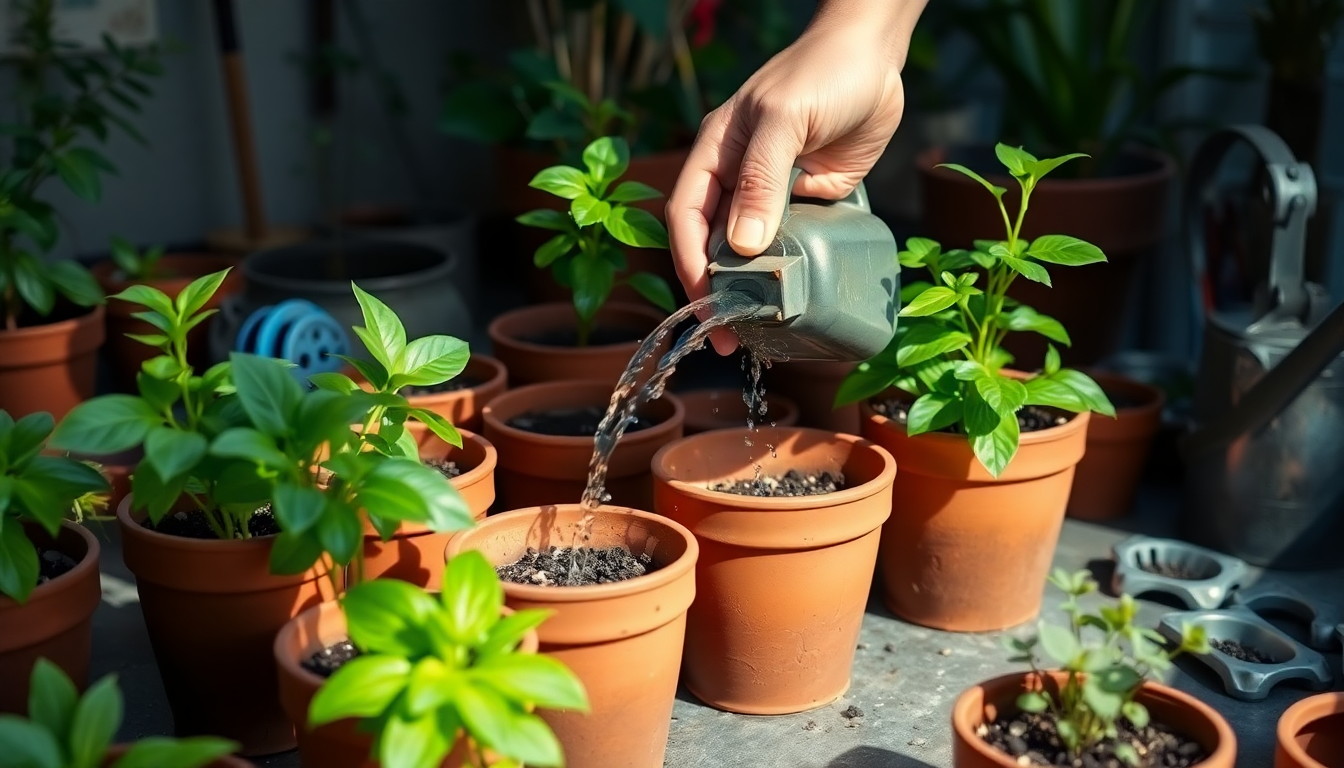As the sun rises over the bustling streets of HSR Layout, Bangalore, gardeners and plant enthusiasts alike are faced with a common challenge – keeping their beloved potted plants healthy and thriving, especially when it comes to the delicate balance of watering. In this comprehensive guide, we'll explore the art of watering plants in clay pots, offering invaluable insights to help you avoid the pitfalls of overwatering and ensure your garden flourishes.
Understanding the Unique Needs of Clay Pots
Clay pots are a popular choice for urban gardeners in HSR Layout, as they not only add a touch of rustic charm to any outdoor space but also offer several benefits for plant growth. However, their porous nature can make them more susceptible to overwatering, a common issue that can lead to a host of problems, from root rot to stunted growth.
The Importance of Proper Drainage
One of the key factors in preventing overwatering in clay pots is ensuring adequate drainage. Unlike their plastic or ceramic counterparts, clay pots allow for greater air circulation around the roots, which can help prevent waterlogging. However, this also means that the soil in clay pots can dry out more quickly, requiring a more attentive watering schedule.
Soil Composition and Moisture Retention
The type of soil used in your clay pots can also play a significant role in moisture management. Well-draining, nutrient-rich potting mixes are essential for plants in clay pots, as they help to strike a balance between water retention and aeration. Incorporating organic matter, such as compost or peat moss, can further enhance the soil's ability to hold moisture without becoming oversaturated.
Developing a Watering Routine
Establishing a consistent watering routine is crucial for maintaining the health of your plants in clay pots. However, this routine should be tailored to the specific needs of your plants, the climate in HSR Layout, and the characteristics of your clay pots.
Factors to Consider
When determining your watering schedule, consider the following factors:
- Plant type and water requirements
- Pot size and material
- Soil composition and drainage
- Temperature and humidity levels in HSR Layout
- Exposure to sunlight and wind
By taking these variables into account, you can create a watering plan that ensures your plants receive the right amount of moisture at the right time.
Monitoring Soil Moisture
One of the most effective ways to avoid overwatering in clay pots is to regularly check the soil moisture levels. Use your finger to gently insert it into the soil, feeling for the level of dampness. If the soil feels saturated or waterlogged, it's time to hold off on watering until the top inch or two of soil has dried out.
Adjusting Watering Frequency
As the seasons change and the climate in HSR Layout fluctuates, you may need to adjust your watering frequency accordingly. During the hotter, drier months, you may need to water more often, while in the cooler, wetter seasons, you can reduce the frequency to prevent overwatering.
Troubleshooting Overwatering Issues
Despite your best efforts, you may still encounter instances of overwatering in your clay pots. Recognizing the signs and taking prompt action can help you mitigate the damage and get your plants back on track.
Identifying Overwatering Symptoms
Some common signs of overwatering in clay pots include:
- Wilting or drooping leaves, despite the soil being moist
- Yellow or discolored leaves
- Fungal growth or mold on the soil surface
- Foul odor emanating from the pot
- Stunted growth or lack of new foliage
Addressing Overwatering Problems
If you suspect your plants are suffering from overwatering, take the following steps:
- Stop watering immediately and allow the soil to partially dry out.
- Inspect the roots for signs of rot or disease, and remove any affected parts.
- Consider repotting the plant in fresh, well-draining soil if the root system is severely compromised.
- Increase air circulation around the plant and ensure proper drainage.
- Monitor the plant closely and adjust your watering schedule accordingly.
Partnering with Idyl for Optimal Plant Care
At Idyl, we understand the unique challenges of gardening in HSR Layout and are committed to providing our customers with the knowledge and resources they need to succeed. Our team of experienced horticulturists can offer personalized advice and guidance on everything from soil preparation to watering techniques, ensuring your plants thrive in their clay pot environments.
Whether you're a seasoned gardener or a newcomer to the world of urban horticulture, Idyl is your one-stop-shop for all your gardening needs. From a wide selection of high-quality plants and fertilizers to our reliable gardening services, we're here to help you create a lush, vibrant oasis in the heart of HSR Layout.
Conclusion
Mastering the art of watering plants in clay pots in HSR Layout is a delicate balance, but with the right knowledge and a little practice, you can ensure your garden flourishes. By understanding the unique needs of clay pots, developing a tailored watering routine, and addressing any overwatering issues promptly, you can create a thriving, low-maintenance oasis in your own backyard. Partner with Idyl, your trusted gardening experts, and unlock the full potential of your clay pot plants today.


0 comments